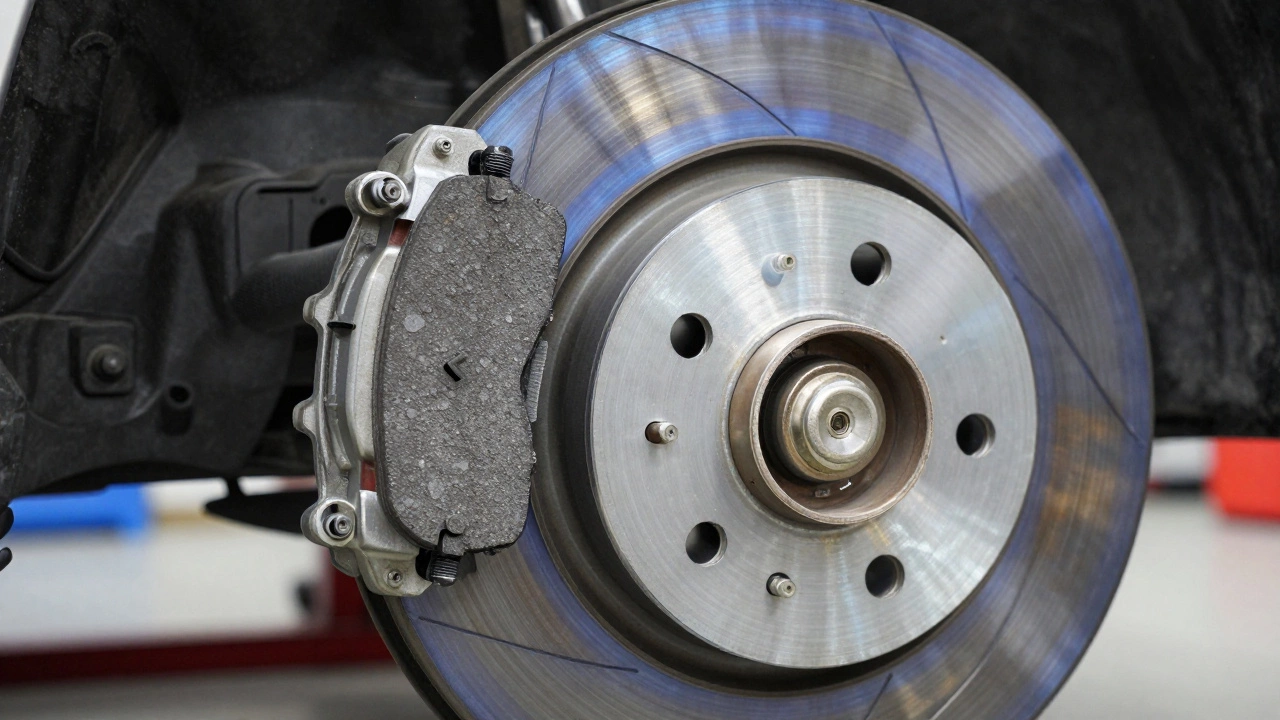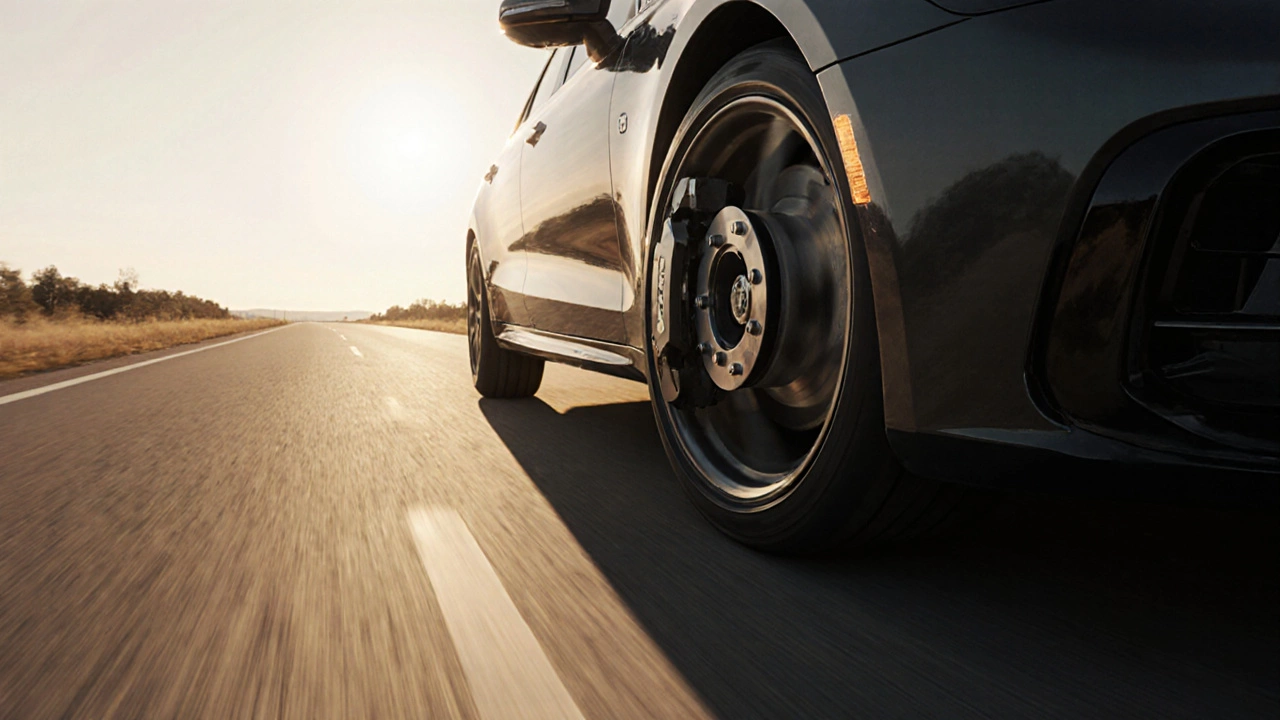Brake Pads: When to Replace Them and What You Need to Know
When you press the brake pedal, it’s the brake pads, thin friction components that clamp down on the brake rotors to slow or stop your vehicle. Also known as brake linings, these small parts are the unsung heroes of your car’s safety system. Without them, your brakes wouldn’t work—not even close. They’re not just rubber or metal; they’re the direct link between your foot and your car’s ability to stop. And when they wear out, everything changes.
Brake pads don’t work alone. They interact with brake rotors, the metal discs that spin with your wheels and get gripped by the pads to create stopping power. Over time, worn pads can damage rotors, leading to expensive repairs you could’ve avoided. Front brake pads usually take 70% of the stopping load—so they wear faster than rear ones. That’s why you often see front pads replaced before the rear ones. But ignoring rear pads? That’s asking for uneven braking, longer stops, or even loss of control. And if you’re hearing squealing, grinding, or feeling vibration when you brake, those aren’t just noises—they’re warnings.
How long do brake pads last? It’s not a one-size-fits-all answer. If you drive mostly in city traffic, stop-and-go, or haul heavy loads, they might need replacing in 25,000 miles. If you drive mostly on highways with smooth braking, they could last 50,000 or more. But mileage isn’t the only factor. Driving style, pad material, weather, and even your car’s weight all play a role. You don’t need to guess—there are clear signs: thin pads (less than 1/4 inch), metal-on-metal grinding, longer stopping distances, or a dashboard warning light. Skipping checks because "it still stops" is a gamble with your life and your wallet.
You might wonder: can I just replace the pads and leave the rotors? Sometimes, yes—if the rotors are smooth, not warped, and thick enough. But if they’re grooved, cracked, or too thin, putting new pads on old rotors is like putting new tires on bent rims. It won’t work right, and it won’t last. That’s why smart drivers check both at the same time. And while you’re at it, consider keeping a spare set. Not because you’ll need them tomorrow, but because brake failure doesn’t wait for a convenient time.
Brake pads aren’t something you fix once and forget. They’re part of a system that needs regular attention. Whether you’re doing it yourself or taking it to a shop, knowing what to look for saves money and keeps you safe. Below, you’ll find real guides on replacing them, spotting wear, understanding front vs. rear differences, and deciding when to skip rotors—or not. No fluff. No guesswork. Just what you need to keep your car stopping when it matters most.
Can I Just Replace Brake Pads Without Changing Rotors?
Replacing brake pads alone might seem like a quick fix, but it can be dangerous if rotors are worn. Learn when you can skip rotors-and when you absolutely can't-for safer, longer-lasting brakes.
Changing Brake Pads by Yourself: DIY Guide
Learn how to replace brake pads by yourself with a step‑by‑step guide, tools checklist, safety tips, and FAQs for a safe DIY brake service.
Front vs Rear Brakes: Which Do the Heavy Lifting?
Learn why front brakes usually do most of the stopping work, when rear brakes matter, and how to keep both axles in top shape for safety and performance.
How Long Can I Drive on Bad Brake Pads?
Wondering if you can keep driving with bad brake pads? This article digs into how worn pads affect your safety, what can actually go wrong, and how far you might stretch things before real damage happens. You’ll find straight talk, practical tips, and warning signs you can’t ignore. Don’t risk damage to your car or your wallet—learn what’s really at stake. Get real answers and stay safer on the road.
How Often Should Car Brakes Be Replaced? Know When to Change Your Brake Pads
Not sure when your car’s brakes need a swap? This guide breaks down everything you need to know about how often to replace brake pads, what signs to look for, and what can mess with their lifespan. You’ll get tips to keep your brakes in top shape and spot problems before they turn serious. Staying sharp on brake health doesn’t just save cash—it keeps you and your passengers safe. Whether you drive daily or only on weekends, knowing the signs of brake wear will help you plan ahead.
Do I Need to Buy 2 Sets of Brake Pads?
Wondering if you need two sets of brake pads for your car? This article clears up the confusion by explaining when and why having two sets can be beneficial. Get insights into the wear patterns of brake pads, the benefits of maintaining spares, and tips for ensuring your safety on the road. Learn about the different types of brake pads and how driving habits influence your decisions.
Can I Drive My Car with Bad Brake Pads?
Driving with bad brake pads isn't just risky—it's downright dangerous. These thin metal or composite parts might seem small, but they play a huge role in stopping your car safely. Without proper brake pads, your stopping distance increases, putting you and others at risk. It's essential to understand the impact of worn-out brake pads and to know when it's time for a replacement to ensure safety on the road.
Can I Just Replace Brake Pads and Not Rotors?
Wondering if you can just swap out the brake pads without touching the rotors? This article explores the do's and don'ts of brake maintenance. Get the lowdown on when it’s okay to skip rotor replacement, what signs to watch for if a rotor change is needed, and how to keep your brakes in top shape. Perfect for car owners who want to make informed decisions about their vehicle's maintenance.
How Long Do New Brake Pads Really Last?
Understanding how long new brake pads last is essential for every driver. This article explores the factors influencing their lifespan, tips on recognizing wear and tear, and advice on how to make them last longer. Whether you’re a seasoned driver or a newbie, keeping your brake pads in check is crucial for safety. Dive into practical tips and facts that could extend the life of your brake pads significantly.
When to Replace Your Brake Pads: The Clear Signs
Recognizing the signs of worn-out brake pads is crucial for your safety and your car's health. If you're hearing unusual squealing or feeling vibrations, it might just be time. Regularly checking your brake pads can save you time and money in the long run. Learn key tips on how to spot when those trusty pads are due for a change.
Recognizing When Brake Pads Need Replacement: Essential Tips and Signs
Knowing when to change your brake pads is crucial for maintaining vehicle safety and performance. Look for warning signs including unusual noises, decreased responsiveness, and visual wear on the pads. Staying proactive with brake maintenance not only ensures safety but also extends the life of your vehicle. Understanding the lifespan and wear indicators of brake pads can help prevent costly repairs and dangerous driving conditions. Regular inspections by a professional can help catch issues early and maintain peace of mind on the road.










